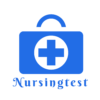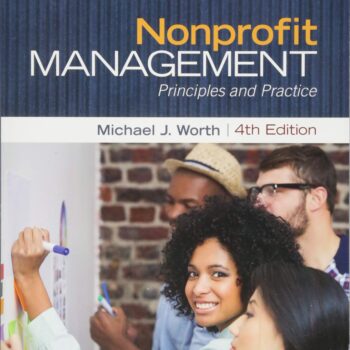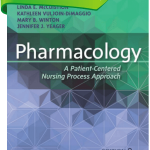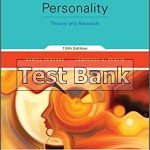
Test Bank For New Perspectives on HTML CSS and XML Comprehensive 4th Edition by Patrick Carey
Original price was: $100.00.$28.00Current price is: $28.00.
Digital item No Waiting Time Instant DownloadISBN: 9781285059099
Hello, our customers! We are glad to present the Test Bank for New Perspectives on HTML, CSS, and XML Comprehensive 4th Edition Test Bank by Patrick Carey. This test bank is a great aid for both students and educators as it contains numerous questions and answers that match very well with the textbook. This test bank is a helpful tool for students ready to take exams or teachers who wish to augment their teaching aids.
What Makes This Test Bank So Important
This is a test bank that aims at targeting the fundamental principles of web design in you. It’s quite extensive, covering several areas and making sure you have what it takes to perform well. This resource is not just for people looking to complete a test– it is for people looking for a complete and holistic comprehension of the material. With this test bank, students would be able to delve into the concepts of [HTML], [CSS], and [XML], while earning an understanding of how the three can be used in synergy to create effective web pages.
Key Topics Covered in the Test Bank
- Basics of HTML: Get immersed in the First Markup Language; understanding the concept of tags, elements, and structure of an HTML document.
- Basic concepts in CSS: Page appearance may also be changed with CSS. This section will explain how can you go from elementary page decoration to complex structuring of web pages. Focus on selectors, properties, and CSS as a whole. Always consider device dimensions when designing a visual.
- Basics of XML: XML is also a stage where you first learn how to store data and transfer it. This part of the test-bearing material will provide you with a background image of XML and how to work with XML documents. Daily use XML- understand how it is presented in the area of web development, and those areas where XML documents can be used as data storage and transport tools.
- General Guidelines in Web Development: Understand the principles and techniques of developing web applications that are both efficient and effective. Learn about coding practices, guidelines on web content development that are accessible as well as implementation of performance-enhancing techniques that fine-tune the usability of web pages.
- Responsive Design: It has become an expectation for websites and pages to work seamlessly across all devices, be it a computer or a mobile phone. It is in this section that you will learn the principles of responsive web design and how to make web pages fit in with the size and orientation of different screens.
Advantages of Using Our Test Bank
There are a lot of advantages when you use our test bank:
- Improve Learning: Deepen your knowledge of web development with simulated practice questions relevant to the real exam. This test bank is structured such that, students can determine which areas they need to focus more on in their studies and remember prominent topics.
- Make Efficient Use Of Time: Devote your time and energy towards the most crucial subjects. The test bank is arranged by chapter, so you can quickly access the questions about the content you are currently studying.
- Increase Self-Confidence: Have trust in your answers before the actual exams. This way, our test bank will put you in a state of practice where you will answer questions in the style you will be presented for your exams, and this will help you feel more ready and confident for the day of the exam.
Effective Ways of Using the Test Bank
To get the best use of this test bank, it is advisable to follow this procedure:
- Peruse Every Chapter: Start this process by going to the relevant chapter in the textbook. This will place you on firm ground with the content to be covered.
- Respond to Queries: Attempt the test bank questions to see whether you understand the material covered in the textbook. Do not consult the textbook when trying to respond to the questions to find out whether you have comprehended the material.
- Validate Your Responses: Go through the answers that have been supplied to clarify your understanding of the material. Where for instance you miss a question, return to the textbook and the appropriate page or chapter.
Conclusion
As far as this situation is concerned, the Test Bank for New Perspectives on HTML, CSS, and XML Comprehensive 4th Edition by Patrick Carey is an invaluable addition for people intending to advance their web development capabilities.
Test Bank For New Perspectives on HTML CSS and XML Comprehensive 4th Edition by Patrick Carey
TRUE/FALSE
1. The home page acts as a focal point for the Web site.
ANS: T PTS: 1 REF: HTML 75
2. Linear structures work for Web sites that are large and have a clearly defined order of pages.
ANS: F PTS: 1 REF: HTML 75
3. The structure shown in the accompanying figure is a hierarchical structure.
ANS: F PTS: 1 REF: HTML 75
4. In the structure shown in the accompanying figure, you can jump only from one page to the next or the previous page.
ANS: T PTS: 1 REF: HTML 75
5. The structure shown in the accompanying figure is an augmented linear structure.
ANS: T PTS: 1 REF: HTML 75
6. The structure shown in the accompanying figure is a linear structure.
ANS: F PTS: 1 REF: HTML 76
7. You can combine linear and hierarchical structures in a Web site.
ANS: T PTS: 1 REF: HTML 76
8. Unstructured Web sites can be difficult and frustrating to use.
ANS: T PTS: 1 REF: HTML 77
9. Different Web site design principles apply to the protected section than to the regular, open section of the site.
ANS: F PTS: 1 REF: HTML 78
10. Every Web site should include a navigation list, which is a list containing links to the main topic areas of the site.
ANS: T PTS: 1 REF: HTML 79
11. Hyperlinks are created by enclosing some document content with a set of opening and closing <a> tags.
ANS: T PTS: 1 REF: HTML 81
12. When you specify only the filename, the browser assumes the file is in the same folder as the document containing the hypertext link.
ANS: T PTS: 1 REF: HTML 85
13. A relative path specifies a file’s precise location within the entire folder structure of a computer.
ANS: F PTS: 1 REF: HTML 87
14. You should almost always use relative paths in your links.
ANS: T PTS: 1 REF: HTML 88
15. The base element is useful when multiple documents are moved to a new folder.
ANS: F PTS: 1 REF: HTML 89
16. To enable users to jump to a specific location within a document, you first need to mark that location.
ANS: T PTS: 1 REF: HTML 91
17. If you assign the same ID name to more than one element on a Web page, browsers use the first occurrence of the ID name.
ANS: T PTS: 1 REF: HTML 91
18. The target of the link needs to be a Web page; it cannot be another image file.
ANS: F PTS: 1 REF: HTML 102
19.HTML allows you to divide an image into different zones, or hotspots, each linked to a different destination.
ANS: T PTS: 1 REF: HTML 103
20. The URLs for all Web Pages must start with the http scheme.
ANS: T PTS: 1 REF: HTML 109











